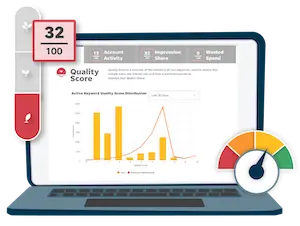According to research from the Content Marketing Institute, 85% of B2B marketers say lead generation is a top priority, but 44% rate their efforts as neutral when it boils down to effectiveness.
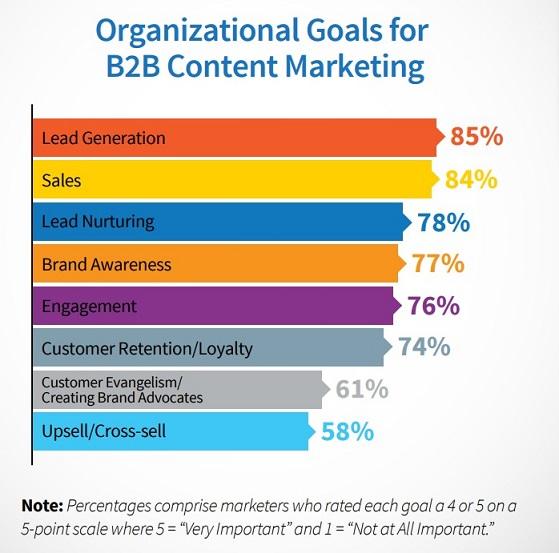
That’s not to say content marketing isn’t a valuable tactic—it is. But it’s certainly not the only one at B2B marketers’ disposal.
Here, we’re looking 10 B2B lead generation strategies, including content marketing, to share how you can add these to your marketing plan and make sure your hard work and effort is effective—and certainly not ending up neutral.
Let’s get started.
1. Content Marketing
Content marketing is certainly a popular suggestion, and perhaps worthy of its own post. That’s because, like consumers, businesses also want to arm themselves with information before a big purchase.
“[B2B marketing publication] the Demand Gen Report estimated that 47% of buyers read between three and five pieces of copy before contacting a sales rep while [research firm] Gartner estimates that more than 65% of purchasing decisions occur before a buyer ever makes contact with a supplier,” said Anu Ramani, founder and managing director of content marketing agency Isoline Communications.
And so, Tony Mastri, digital marketing manager at B2B agency Marion Integrated Marketing, said nothing beats an ongoing SEO campaign with B2B content marketing support in generating leads.
He recommends using a tool like SEMrush to identify keywords and content length recommendations for your core product/service pages and to then build out said pages to address your perceived user intent. Mastri also says to go as niche as possible with your pages and blog posts.
“For example, if you’re a child support lawyer in Dallas, Texas, all of your long-form blog content should be about child support issues in Texas or Dallas specifically,” he said.
This can also help compensate for advertisers in industries with high CPC rates.

“In these industries, paid advertisements are often too costly to achieve a positive ROI, so organic traffic with positively compounding results is the clear strategy of choice,” he added.
Similarly, Md Mohsin Ansari, marketing manager at office chat and messaging app Troop Messenger, said the startup decided to target “Microsoft Teams vs. Slack” rather than broader keywords like “team chat apps,” “office chat” or “business chat” thanks to Ahrefs keyword planner tool.
“The fact that customers were searching for ‘Microsoft Teams vs Slack’ itself indicates that they are aware of both the products but [are] unable to pick which one meets their requirements adequately,” Ansari said. “So, it [was] high time for us to pinpoint the pain points in using them through our post with the keyword and [introduce] our product … as an alternative.”
While he did not share specifics, he said this keyword-post combination resulted in increased brand awareness, traffic, SERP positions, and CTR.
Per Sneh Ratna Choudhary, a content marketer at B2B SaaS tech startup MobStac, you shouldn’t forget platforms like Quora and Medium, which can also help generate traffic to high-intent landing pages and answer questions potential customers might have.
“For countries where Google is banned, we have seen a small number of leads trickle in because of our detailed answers on these forums,” Choudhary added.
2. LinkedIn
Not surprisingly, professional network LinkedIn is also high on the list of best B2B lead generation strategies.
According to Zuza Witulska, growth hacker at software development company Netguru, Linkedin lead generation ads give users very specific targeting criteria.
“This gives our ads the chance to reach C-level decision-makers from companies of our interest, as well as potential leads,” she said.
One of Netguru’s best-performing lead generation campaigns on the network targeted fintech companies with an ebook.
“We were iterating on the ad copy [both visual and messaging] to figure out which version resonates best with the fintech community and adjust the budget accordingly,” Witulska said. “Long story short, not only did we generate more than 240 high quality contacts … but also the lead acquisition cost was 78% lower than in other lead gen campaigns.”
Choudhary agreed LinkedIn Ads can generate high-intent leads.

“We procured data about the companies and industries we wanted to target from [business information site] Crunchbase and then segmented ads based on industry and job title on LinkedIn,” she said. “The ad ran on LinkedIn for two weeks, and we received high-quality enterprise leads that would have otherwise probably not found us.”
3. Google Ads—especially when they’re well-timed
After a competitor had an outage, Internet traffic optimization company Constellix created a Google Ads campaign to target those who were impacted using phrases from reviews and forums in its ad copy.
“We did notice that some of our ads weren’t as effective because they focused too much on the negative impacts of outages rather than the desired benefits,” said Blair McKee, digital marketing manager at Constellix. “So we pivoted and modified our ad copy to push the benefits of switching providers and saw immediate improvement [in] both click-through rates and impressions. Our quality score also improved, which I attribute to our ad copy, [which] was more representative of the landing copy.”
Learn more about using Google Ads for lead generation here.
4. Facebook lead ad campaigns
Don’t dismiss Facebook as waste of time in B2B. In fact, web developer Rob Smith of WebDesignCity pointed to a study from marketing platform HubSpot, which found 74% of consumers use Facebook in professional capacities, too.
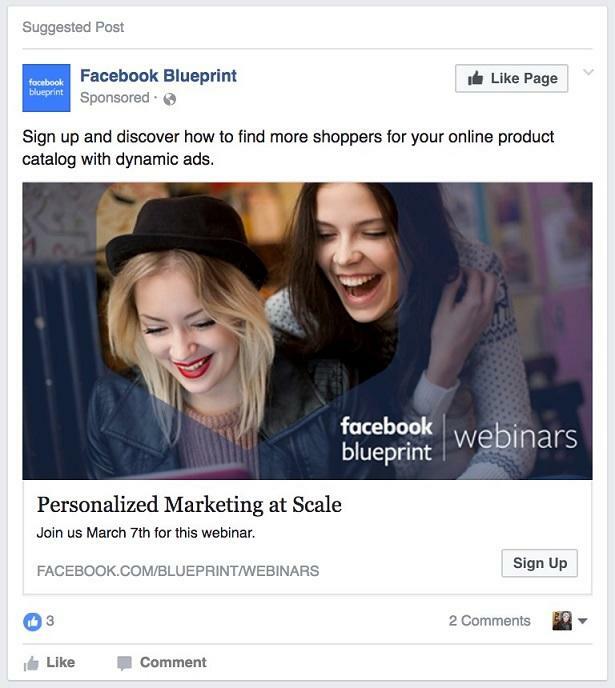
Alistair Dodds, marketing director at digital marketing agency Ever Increasing Circles Marketing, agreed his go-to B2B lead generation strategy includes Facebook lead ads.
The firm starts by split-testing clients’ custom audiences to produce lookalike audiences versus interest-based audiences, and it tests a lead magnet offer to ensure the content includes what prospects are looking for. Then, Dodds said he split-tests the angle of the subject material.
“So, for example, one campaign will focus on benefits whereas another will target a [fear of missing out (FOMO)]-play to see which resonates with our prospects the most,” he added. “Again, we’ll split-test the ad content to find the video or image that garners the most attention and build out creative assets from that. We’ll also split-test the copy to match the angle we are taking.”
For example, if you’re a financial services firm targeting mortgage brokers, you could offer a tiered level of data analysis reports or white papers.
“We found the FOMO play to [be] especially effective in this market as each broker is looking for a competitive advantage over the competition,” he said. “Both types of lead magnet material were offered to the first 100 users to sign up. The data analysis reports outperformed the white papers by a factor of 3.2x.”
5. Live chat
For his part, Guillaume Moubeche, CEO of automated outreach email platform Lemlist, said its B2B lead generation is usually based on live chat—with customer service reps delivering more than 11,000 messages per month, making it the firm’s best-performing lead generation channel. By focusing on customer experience, Lemlist converts around 30% of these site visitors, he added.
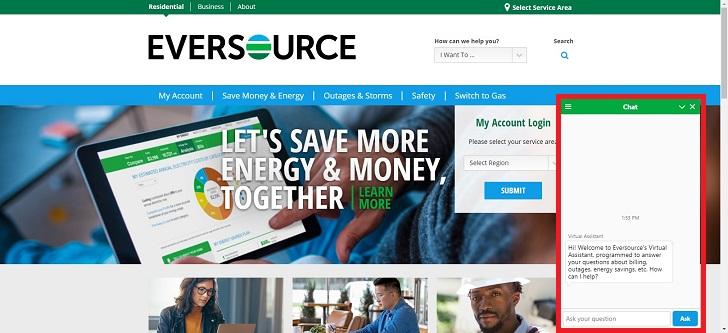
“To save our resources, we’re using [customer service and live chat Slack app] Lemtalk live chat that’s fully integrated into Slack,” Moubeche said. “So we’re receiving and answering all of our messages directly from Slack. The best part is that on Slack we’re also receiving messages that came through Facebook, SMS or email, so we’re basically receiving all of our messages into one Slack.”
6. Live video
Digital marketing specialist Sirarpi Sahakyan said live video is an effective way to generate leads as data from review site Techjury found 87% of businesses use video as a marketing tool.
Topics for live video campaigns include webinars, product launches, Q&As, teasers, how-tos, events and special guests. Platforms include LinkedIn, YouTube and/or Facebook, although Sahakyan said marketers can stream to multiple channels at the same time.
“At the end of the live video campaigns, we noticed that more people showed interest in the product than through our blog content,” Sahakyan said. “Multistreaming helped us analyze our audience through [cloud multistreaming service] Restream analytics and see where we could improve.”
7. Facebook ThruPlay
Brands with smaller budgets should try Facebook’s ThruPlay, a new optimization and pay-per-view feature for video ads, said Stacey Kehoe of digital marketing agency Brandlective Communications.
“Unlike the existing formats, designed to achieve the lowest cost per three-second or 10-second video view, ThruPlay allows advertisers to optimize and pay only for ads that are watched for at least 15 seconds,” she said. “This is a game-changer for those with a limited budget because it means they can be savvy by creating a marketing message that repels the audience that do not meet their ‘perfect avatar’ in the first 15 seconds.”
Advertisers can then segment relevant viewers into new lists and retarget them with another ThruPlay ad that further narrows the field.
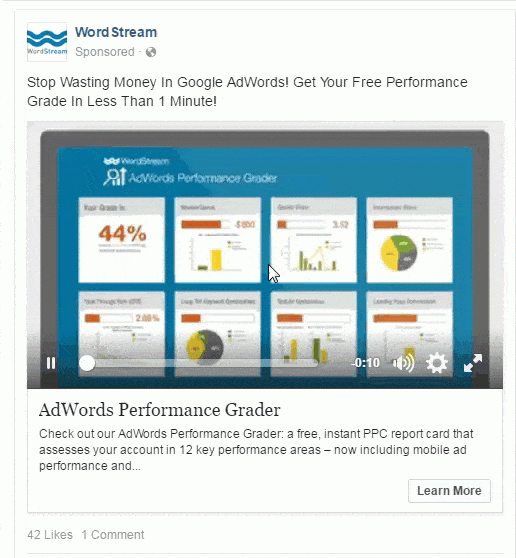
“You can repeat this process to build a highly targeted, warm list of prospects paying very little on Facebook ads,” she added.
8. Gated videos
The first thing most marketers think of with gated content is guides/ebooks. But video works well here too. Phil Nottingham, brand marketing strategist at video software company Wistia, suggests adding email collection functionality to videos with some kind of incentive.
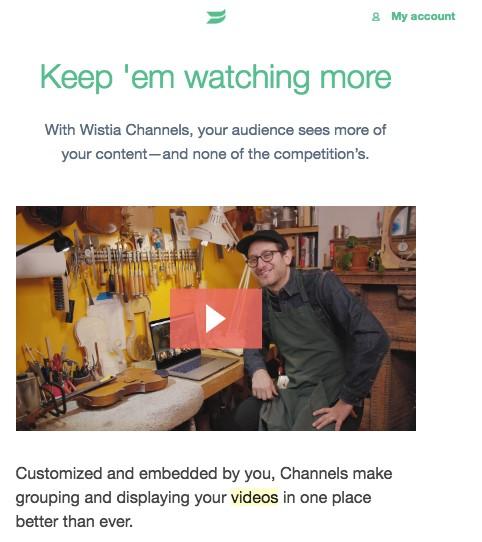
“A discount offer is a worthwhile exchange for that email subscription,” he said. “Placing the email gate at the beginning of a video with a solid incentive can increase email sign-up by 400%, as discovered by the Santa Barbara Chicken Ranch, a local chicken restaurant in California. This client also measured no significant loss in content views from this strategy.”
9. Personalized videos
Not surprisingly, Vito Santoro, co-founder of Vaetas, which produces personalized call-to-action videos, is a fan of personalized videos.
Before connecting with prospects, Vaetas records a short video, which it sends via email, text or social.

Wistia calls these “videos that don’t scale.”
“We found that this approach increased our cold conversions by 38%,” Santoro said. “Warm follow-up emails and text messages converted at an amazing 99%. The key is to be authentic and communicate that you understand your prospect’s needs, as opposed to immediately trying to sell your products or services.”
10. Free stuff
Then there’s always the age-old tactic of offering something free as a carrot.
In fact, Sam Orchard, director of web design agency Edge of the Web, said it’s one of his agency’s most popular lead generation methods, but you have to offer something of real value—and even something a competitor might charge for.
“We’ve had great success by offering signups [for] a free SEO audit for their site,” Orchard said. “It’s something that takes relatively little time for us to do, but provides the business with something valuable. It’s been a very successful strategy for us, with around 30% of people who signed up for a free SEO audit continuing to request paid work with us.”

HubSpot offers a free product marketing go-to-market kit here.
In a similar vein, Choudhary said MobStac built a free QR code generator after its product line expanded to include QR codes.
“The search volume for this keyword is 550,000/month,” she said. “Since the launch, our visitor-to-trial conversion rates have picked up and are currently hovering at 15.6%.”
Another tactic in this vein is offering a closed beta to potential customers.
Nadiia Shevelieva, CMO of online marketing tools firm Crowdy.ai, said it had 100 free beta accounts, which Crowdy.ai promoted through ads and social media.
“Once someone joined the beta, they would have free access to our app for three months after signup instead of paying about $50 monthly,” Shevelieva said. “In return, we asked for comments about our app and how it performed.”
As a result, 72 of 100 users became paying customers and 58 new users were added as a result of recommendation s from the beta group.
“Overall, this strategy has performed great for us since we’ve just launched our product,” Shevelieva added.
Test these B2B lead generation strategies out!
Here are ten strategies you can use to attract more high-quality B2B leads:
- Content marketing
- Google Ads
- Facebook lead ads
- Live chat
- Live video
- Facebook ThruPlay
- Gated video
- Personalized video
- Free stuff
Now, test them out to see what works best for your audience—and get those leads!

